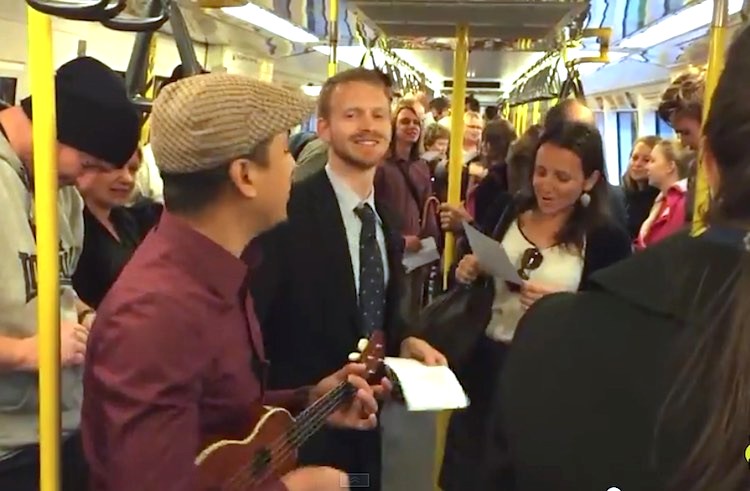It begins not on a stage, but in the humble, often silent carriage of a commuter train. The early morning light slants through the windows, illuminating dust motes dancing in the air. Passengers are buried in their own worlds—some staring sleepily at phones, others gazing out at the blurring landscape. The rhythmic clack-clack of the tracks is the only soundtrack. Then, a single, tentative voice cuts through the monotony. A man, perhaps an everyday commuter on his way to a desk job, starts to sing. The song is “Over the Rainbow,” and the first few notes are offered almost as a question to the quiet car.
There’s a beat of suspended reality. Heads turn, not in annoyance, but in curiosity. The singer, gaining confidence, continues: “Somewhere over the rainbow, way up high…” And then, the magic unfolds. Another voice, from a few seats away, a woman’s, softly joins in. Then another, and another. Within moments, the entire carriage is no longer a collection of strangers, but a single, impromptu choir. This is not a performance for an audience; it is a shared experience, a moment of pure, unscripted connection.
The video, captured on a phone, is wonderfully authentic. You can see the transformation on every face. The initial weariness of the morning commute melts away, replaced by shy smiles, surprised glances, and a dawning sense of collective joy. A woman in a blue jacket closes her eyes, singing from memory, a look of peace washing over her. A man across the aisle, who moments before was checking his watch, now looks directly at the singer, his face breaking into a wide, unreserved grin. They don’t have the sheet music; they are singing from heart and muscle memory, from a place of shared cultural childhood.
The harmonies are raw and beautiful in their imperfection. They swell on the hopeful lines, “Why, oh why can’t I?” and soften on the dreamy verses. There is no conductor, no practiced arrangement, just a spontaneous blend of voices finding their way together. The original singer becomes a gentle leader, his voice the steady thread around which the others weave their tapestry of sound. As they approach the final, iconic line—”Why, oh why can’t I?”—the feeling in the car is palpable, a mixture of vulnerability and soaring hope.
Then, it ends. The last note hangs in the air for a second before dissolving into the renewed sound of the train on the tracks. What follows is not wild applause, but something more profound: a soft, collective laughter and a warm round of clapping. People look at each other, truly seeing one another for the first time that morning. The spell is broken, but the warmth remains. For three minutes, a mundane commute was transformed. The troubles and to-do lists waiting at the destination were forgotten, and a simple, shared melody offered something far more valuable than a timely arrival: a beautiful reminder that somewhere, even in a crowded train car, happy little bluebirds still fly, if only we have the courage to sing them into existence.
